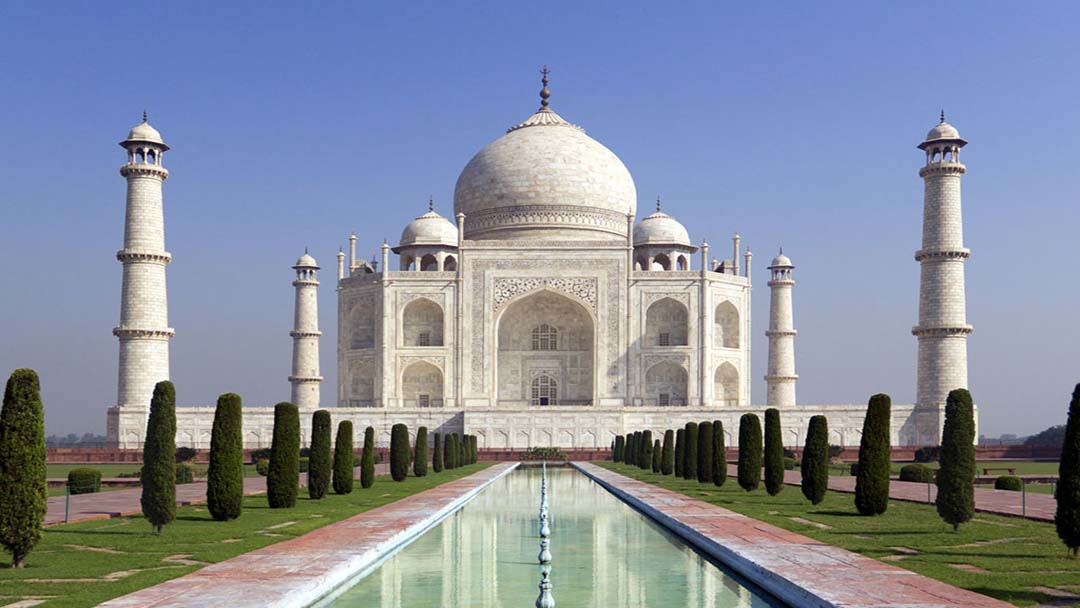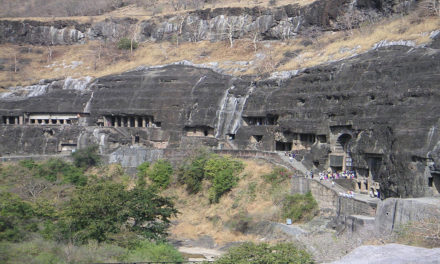The Taj Mahal is an exquisite white marble mausoleum situated on the southern bank of the Yamuna River in Agra. Commissioned by Mughal Emperor Shah Jahan in 1632 in memory of his beloved wife Mumtaz Mahal, its construction was successfully completed in 1653. The architectural brilliance behind the Taj Mahal is credited to Mughal architect ‘Ustad Ahmad Lahauri.’ Revered as a captivating masterpiece in India, it earned the prestigious designation as a UNESCO World Heritage site in 1983, celebrated for its significance as the pinnacle of Muslim art in the country. Annually, around 7-8 million visitors flock to Agra to marvel at the Taj, a structure that was rightfully declared the 7th wonder of the world in 2007.
The focal point of the entire complex is the tomb of the Taj Mahal, an immaculate white marble edifice standing on a square base. Surrounding it on three sides are walls constructed from red sandstone. At the distant end of the complex, two symmetrical sandstone buildings mirror each other, facing the sides of the Taj Mahal’s tomb.
The tomb, at the heart of the Taj Mahal, is a symbol of architectural perfection and a testament to the fusion of Islamic, Ottoman Turkish, and Indian architectural styles. Most visitors prefer to explore this marvel during the cooler months of October, November, and December when the weather is more comfortable, enhancing the overall experience of witnessing the first example of Mughal architecture.





